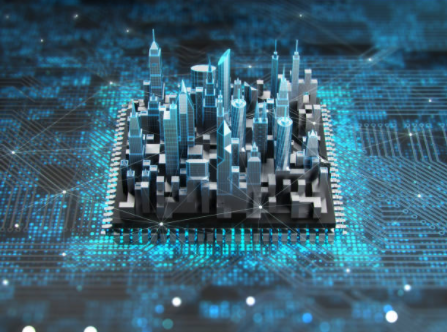
Integration: The key to powering the future of technology
By Raj Radjassamy, director, 5G wireless segment for ABB Power Conversion
Electronics Power Supply / Management Wireless Engineering IoT 5G devices Editor Pick Networks power smart wirelessIncorporating tech into every aspect of our daily lives is becoming a defining feature of technological advancement
As 2021 gets underway, technological innovation’s rapid pace shows no signs of slowing any time soon. But while 2020 was all about the speed at which change occurred – with nearly two years of digital transformation happening in just two months (think the great e-commerce migration, with the U.S. Commerce Department showing a 37% increase in online sales in Q3 – the next phase of technological innovation will be marked by a different keyword — Namely, integration.

Source: Getty Images
The seamless incorporation of technology into every aspect of our daily lives is becoming one of the most defining features of technological advancement. From ultra-fast 5G networks that provide unparalleled interconnectivity to smart cities complete with energy-efficient bike charging racks, electric vehicle (EV) charging stations, and data-driven infrastructure, suggesting that we stand on the cusp of a fifth industrial revolution is anything but hyperbolic.
The hallmark of technological innovation is often its imperceptibility. Advancements that become so tightly woven into the fabric of everyday life that they ultimately assume an air of inevitability, noticeable only in their absence. But what exactly will it take for these revolutionary advancements at the intersection of technology and human-centered design to come to fruition? In a word, power. Simply put, power is the ultimate enabler of technological advancement. It lies at the heart of how we live, how we work, and how we remain connected to everyone and everything around us.
In this article, I will examine three technology trends currently underway with the potential to reshape our collective future. Each trend makes it abundantly clear that as technology continues to evolve, fulfilling the promise of innovation relies on the development and design of reliable, compact, and efficient power supply systems capable of propelling the world of tomorrow.
Connected Living: Powering & Untethering New Devices
Just a decade ago, the smartphone was considered a luxury. Today, our phones, personal computers, and mobile devices are integral rather than ancillary to daily life. At the start of 2021, the adjectival modifier “smart” has become ubiquitous. Smartphones have given way to smartwatches, smart speakers, smart televisions, and all types of intelligent home appliances designed and manufactured with connectivity at their core. At present, U.S. households have an average of 11 connected devices, including seven smart screens to view content – numbers that are likely to increase in tandem with the widespread adoption of 5G networks capable of supporting even greater connectivity levels.
Not surprisingly, the penetration of technology and intelligent data sources in our daily lives has also led to increased power consumption. This distributed network of devices requires accessible and available power-on-demand just about everywhere we are – on our wrists, in our pockets, on our walls, and even spread throughout our communities and across industry. But the seamless integration of connected and smart technologies requires connectivity without the limitations of traditional cables and connectors that are not only cumbersome but, more importantly, prone to failure and expensive to maintain.
Facilitating a complete transition from wired to wireless requires power solutions robust enough to eliminate cables while remaining capable of accommodating an ever-increasing amount of power transmission. Moving forward, power engineers must focus on pushing the boundaries of wireless power transfer beyond smaller devices, like cellphones and toothbrushes, to handle increased power loads with the level of reliability and resiliency necessary to support an increasingly complex web of connected infrastructure.
Smart Cities: Connecting 5G & IoT Tech via Miniaturized Power Modules
As 5G network adoption grows, so too does the potential for the Internet of Things (IoT) to extend connectivity beyond the household and into cities themselves. Smart cities consist of an ecosystem of network sensors and devices at the intersection of technology and human experience to collect and transmit data in real-time. From commuter data with the potential to improve mass transit and the flow of traffic to smart infrastructure that can optimize power usage and advance sustainability initiatives, the promise of smart cities lies in their ability to reshape the citizen experience completely.
To be sure, the connectivity of the smart city depends on the development of a robust 5G network capable of ensuring reliable, hyper-connectivity at breakneck speeds with ultra-low latency. But fulfilling the true potential of 5G and the Internet of Things requires a level of network density that differs significantly from earlier generations of cellular and broadband infrastructure. The reliance of 5G on smaller, widely distributed transmitters requires a power infrastructure that is not only dense enough to handle the increased demand but, more importantly, compact enough in its design to integrate into a city’s architecture without appearing unsightly, obtrusive, and out of place.
By emphasizing the design of miniaturized components capable of withstanding harsh weather conditions, power engineers can play a critical role in enabling greater flexibility for device placement and increase opportunities capable of facilitating greater connectivity. In short, smart cities’ success hinges on the need for smaller, more compact power supplies that can live alongside the interconnected network of sensors and devices distributed throughout the city.
Mission-Critical Applications: Power’s Role as Data Dependence Increases
With Cisco projecting cloud data centers to process 94% of all workloads and computational data in 2021, defining what we regard as mission-critical continues to evolve. And with good reason. No longer reserved for the power grid alone, mission-critical has grown to encompass everything from credit card processing and mobile payments to online banking and hospital computer systems. What’s more, the overwhelming shift to remote work and an increasingly distributed workforce have facilitated an unprecedented level of demand for access to data from anywhere at any time.
Against this backdrop, the challenge for data center operators is clear. How can data centers ensure their facilities are well prepared to scale operations while increasing efficiency and reliability as uptime and resiliency demands continue to grow, especially in the face of a more significant number of applications regarded as mission-critical?
The answer lies in not just building larger data centers but in innovating within the data center itself, rethinking the critical role power supply architecture plays as a potentially enabling or limiting factor for expanding data center capacity.
A decentralized DC architecture, for example, offers a more efficient approach to power conversion than centralized AC power architectures by reducing the number of voltage conversions needed from the grid to the rack. What’s more, a DC power architecture can eliminate the single point of failure typically associated with a centralized AC architecture by distributing battery backup power directly inside the cabinet while still leaving space for the computing and networking equipment central to data center operations.
Technological Innovation = Power Innovation
From connected living and smart cities to the explosive growth in mission-critical applications, it’s clear that the technological innovations taking shape around us are about more than just convenience. At their core, they are about reimagining the world we inhabit. To be sure, their revolutionary potential is immense. The promise of innovations like wireless charging for electric cars and hospital beds, or advancements in autonomous vehicles driven by the transmission of data in real-time provides a glimpse of a future in which the integration of technology in every facet of human life delivers substantial societal benefits.
But fulfilling this revolutionary potential requires advancements in the design and engineering of the power supply systems at the crux of technological innovation. Typically, we take power for granted. It’s often not until the lights go out that we consider the critical function it serves. But regardless of whether or not we choose to acknowledge the role power plays in our daily lives, it is, in fact, integral. The seamless integration of technology in every space we inhabit – from the living rooms in our homes to the streets in our cities – demands a foundation provided by a robust and ever-evolving power infrastructure.
——————————– 
Raj Radjassamy, Ph.D., director, 5G wireless segment leader for ABB Power Conversion, works with telecommunications, data center, and industrial customers to provide advanced solutions for their dynamic power challenges.
